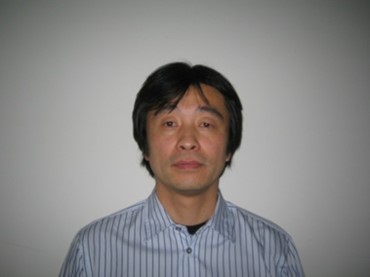Sensitivity of emotional faces and its relation to observer’s trait
Haruyuki Kojima
Faculty of Human Sciences, Kanazawa University, Japan
Some people are good at noticing the change of behaviors, attitudes or expressions of the other, such as a partner, a friend, and/or even a person who met for the first time. Whereas, someones are not. There is obviously a difference between people in sensitivity of reading facial and emotional expressions. Especially, people with autism spectrum disorder (ASD) are reported to be less sensitive in accessing the emotional faces than control participants (Kennedy & Adolphs, 2012). However, we wonder if the reported property might be because of the awkward or clumsy tendency of the ASD people. There is another possibility that not necessarily with ASD diagnoses, autistic trait may relate to such a sensitivity.
Thus, it is desirable to examine the sensitivity of people to emotional cues with a more objective method. Among various physical or physiological measures for human behaviors or responses, pupil size is recognized as an index of response to the affective processing (Partala, Surakka, 2003). Therefore, we investigated if pupil size of the observer could be an index for the sensitivity to the human expressions.
Additionally in the second study, we planned to compare the physical values in terms of participants’ trait of social behaviors. To assess the traits of healthy young adults, we employed Autism spectrum Quotient (AQ) , Broad Autism Phenotype Questionnaire for Japanese (BAPQ-J) and Daily Life Skills Scale for College students (DLS). Then, we evaluated the relation between the scale points and the pupil size when reacting to emotional faces.
EXPERIMENT 1:
Pictures of emotional faces of six typical emotional categories (Anger, Disgust, Fear, Sad, Surprise, Happy)(ATR, 2006) were presented, one by one, either for short time for 0.3 s or longer time for 5 s. Sentences that express the six emotional situations were prepared. There are two types for texts, short texts that consisted of S+V+C(O), and long texts that consisted of two sentences.
Emotional faces presented only for the short period did not draw any statistical difference in pupil size from the neutral face. However, the longer presentation of emotional faces showed more pupil dilation than neutral face. In the text conditions, there was no statistical difference in pupil size between any context situations and from neutral situation, However, with longer sentence presentations, pupil sizes showed contractions in Anger from Happy and Sad, as well as Disgust from Neutral conditions. Happy, Sad and Neutral conditions showed any difference in pupil size between the long and short text conditions, whereas in Anger, Disgust, Surprise and Fear, longer texts conditions produced contracted pupil than short conditions. These results indicate that pupil size would reflect an internal or psychological state, and that the pupil size change need some time, such as one second or more, to react as the reflection of cognitive process to the information context, regardless it was an image or a verbal information.
EXPERIMENT 2:
In Exp.2, sentences were first presented for 2 s and then emotional faces were presented for 3 s. Participants performed a task whether the sentence was consistent with the facial expression. Pupil size change was examined depending on the facial expressions and evaluated with the traits by questionnaires.
AQ high group was larger pupil size than low group to Sad faces. In terms of BAPQ, participants with high aloofness (reserved and remote, staying away) showed less pupil size than low aloof group to angry faces. In contrast, high Pragmatic Lang group showed greater pupil size than low group to sad faces. When classifying by DLS, participants with sensitivity showed significantly larger pupil size than low group to angry faces. The results indicated that pupil size response differs depending on the participants’ trait and also on the emotional context.
DISCUSSIONS
The present study showed that pupil size would reflect the change or move of observer’s internal process. These results showed the possibilities that sensitivity to emotional expression and the pupil response of the process would be different among people depending on their traits. It is also important to notify that pupil size difference was significant only to some types of faces with negative emotions, angry and sad. These response properties would relate to the response mechanism.
Further research would be needed to clarify the relationship between the trait of people and the response properties of the pupil size. It would be also interesting to investigate what elements or details of facial emotional expression do people respond and what kind of cognitive process would intermediate these reactions.




